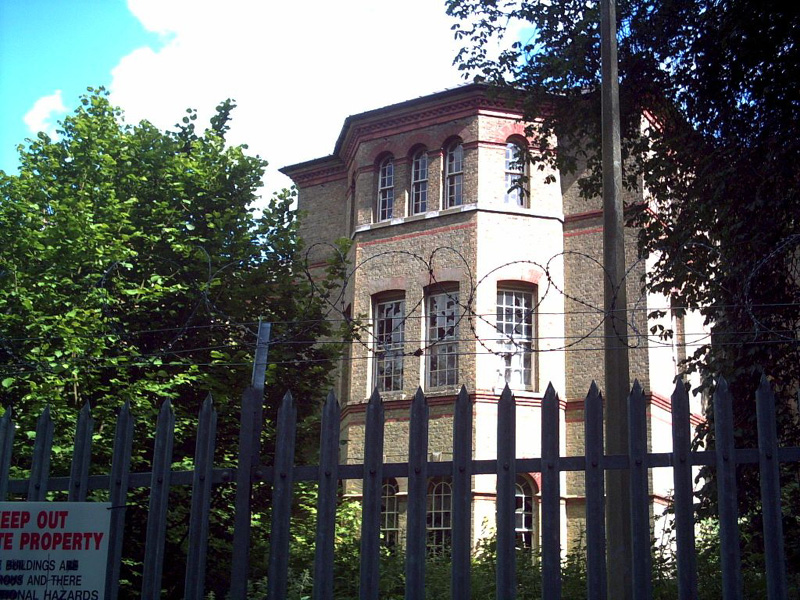|

On Monday 18 February the last patients left Cane Hill, marking the end of 126 years of psychiatric services on site. Opening in 1882, Cane Hill was typical of its time, providing specialised wards for different categories of patients, with day rooms on the ground floor and dormitories and individual cells mostly on the second and third floors. Patient treatments varied (ECT and Hydrotherapy were both practised at the hospital), difficult patients were confined to cells, and those of a more clement disposition could walk the airing grounds. Male patients were encouraged to farm the land and work in the carpenters and stores. Likewise female patients could also help with farm work, but were probably employed more extensively in the hospital’s kitchens and laundry. Recreation was varied – from outdoor pursuits in the recreation fields such as cricket, tennis and swimming through to dances and theatraticals in the main hall. By the 1960s, the hospital had changed little. A new nurses home was built to the north of the site, supplementing the existing block to the back of the hospital complex. The boiler house was moved from the service road at the back of the hospital to a new, purpose built block house near the rear. But new medical breakthroughs, new ideas for the treatment of the mentally ill, and better drugs had lead to new ideas and thoughts on these institutions. It was this new thinking that lead to the Care in the Community legislation in the early 1980s, which saw the large scale closure of practically all the Victorian and Edwardian asylums in the country. Cane Hill was not immune and the site slowly started to close down in the late 1980s with all the staff and patients leaving in 1992. The above history is take from Simon Cornwell's Cane Hill project.
Cane Hill opened in 1882 as the third Surrey County asylum. In 1875 Charles Henry Howell was commissioned to design and build the new asylum on a hilltop in Coulsdon. Howell, an expert and advisor to the Commission of Lunacy, built Cane Hill to high standards and it became a showpiece, the largest building of its type in the country. The hospital was split into male and female sides with an administration block, chapel and large relaxation rooms dividing the two. The grounds were landscaped and formed into ‘airing courts’ – areas where patients could sit outside, bask in the sunshine and enjoy the views across to London (the reason the hospital was built on the hill). Typical of its time, Cane Hill provided specialised wards for different categories of patients, with day rooms on the ground floor and individual ‘cells’ above. Patient treatments varied; difficult patients were confined to cells, and those ‘less distressed’ were free to walk the grounds. Male patients were encouraged to farm the land and work as carpenters or in the hospital’s stores; female patients worked in farming as well as in the kitchens and laundry. Further extended by Howell in 1888, when it was taken over by the newly formed London County Council, its capacity was increased to 2,000 patients. The hospital was its own community; it had a chapel, post office, swimming pool, shops, and its own fire station. Cane Hill continued to function this way until the 1980’s when medical advancements and different treatment ideas led to changes in legislation and ultimately the closure of large scale asylums. Slowly the site began to close down during the late ‘80’s, with the last patients and staff leaving the main site in 1992. Since then the main hospital site has stood empty, a slowly crumbling testament to the grand age of Victorian construction. Even after 16 years of neglect the site maintains an air of grace and the buildings a sense of grandeur. It’s hard not to feel sad that Cane Hill has ended its days in this way. Tucked away in the corner of the site, two services have quietly carried on working. Opening in 1987, the SASS Unit, latterly known as Orchards medium secure forensic unit and Glencairn the forensic rehabilitation unit, have continued to provide the remaining psychiatric services on the Cane Hill site. In February those services were absorbed into River House, Bethlem Royal Hospital, and the last psychiatric services left the site. Driving down the A23 away from London, you can see, perched at the top of the hill in Coulsdon the Cane Hill Water Tower which dominates the sky line, once providing water for over 2000 patients and countless staff, it’s one of the only buildings on the site not earmarked for demolition. A consultation has taken place with all four of the options recommending demolition of most of the site apart from the chapel, water tower and existing front entrance, all of which have a local listing. Staff are keen to see that our connection with the site is not lost, and are currently working with English Partnerships to arrange for a time capsule to be buried by the chapel. In the meantime if you are interested in the consultation outcome you can log on to: www.canehill.org.uk – SLaM News will also keep you updated. A public footpath still runs alongside the hospital so if you are interested in having a look there’s still time, but please be aware that there are security guards patrolling the hospital site 24 hours a day, so you should stick to the public path. The buildings are highly dangerous, many of them are collapsing and contain asbestos.

|